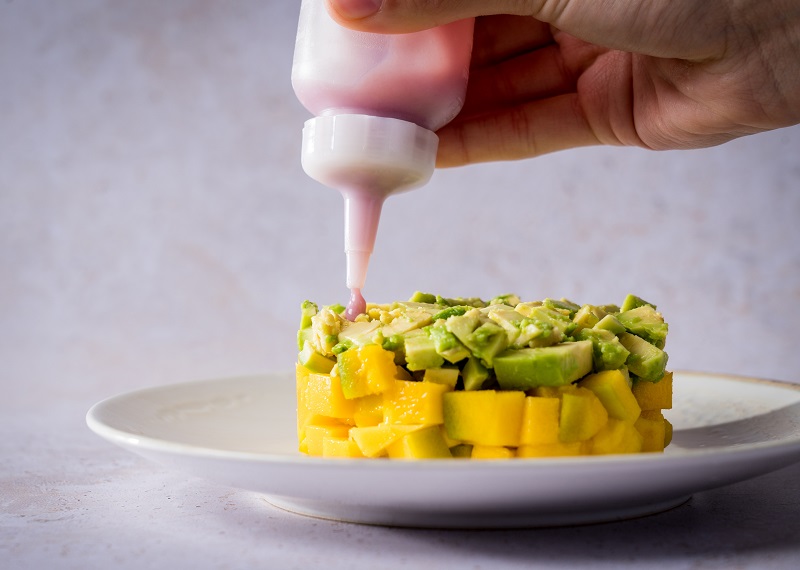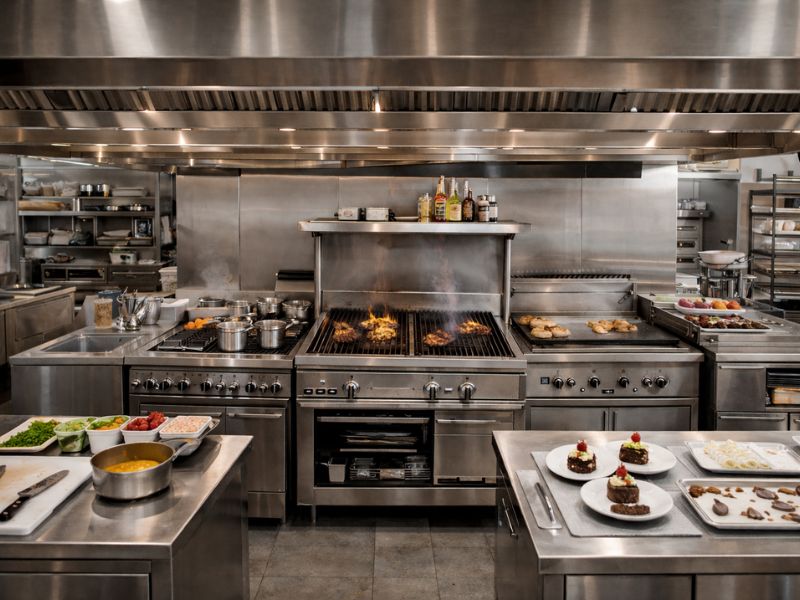Plating is about the care you show when presenting a dish to restaurant customers, which involves not only the actual presentation of the food but also the crockery, decorative elements and shapes and colours used, among others.
In this article, we at Araven explain the different plating techniques, the main points to bear in mind when plating and the products you can use to achieve a perfect result.
Why is good presentation important for dishes?
The way in which a dish is presented is key because it gives consumers their first impression of your product. Food should not only taste good, but it should also be appealing to the eye and arouse the desire to savour it. In this respect, the plating technique you use will make your product unique and differentiate it from what your competitors offer.
There is now a huge range of options for presenting dishes that allow you to add a personal touch. The use of colours, the arrangement of the food, the type of crockery and the inclusion of decorative elements are some of the options available to chefs like you to awaken different sensations in customers.
If the way you plate dishes succeeds in creating an impact on customers, they are more likely to remember your restaurant, recommend it to others and come back.

12 plating techniques
When it comes to plating, there are different plating techniques that you can use to surprise and delight customers. The choice of one or another will depend on the sort of foods and textures featured in the dish, the way it is prepared and the crockery used to serve it. Here are some of the most common plating techniques:
Technique 1: Classic plating
The plate is viewed like a clock, with food positioned at the most important points, which are the 2, 6 and 10. As many as 12 divisions can be used, but the key to this plating style is to give the components visibility.
Technique 2: Symmetrical plating
In this case, the plate is divided into two parts with the same proportion, which provides a sensation of symmetry and balance. Pairing the components creates a greater sensation of harmony.
Technique 3: Free-form plating
This type of plating seeks to arrange components of the dish without achieving any particular form or balance. However, the disarray is completely calculated to allow the combination of components to produce a particular sensation.
Technique 4: Rhythmic plating
This consists of repeating a pattern several times on the plate, creating both an ordered and dynamic sensation. This is one of the most common plating methods used for desserts.
Technique 5: Central or structured plating
As its name indicates, this technique involves positioning the main component at the centre of the plate and arranging the others around the centre. This is one of the most popular plating styles used in fine-dining because of its simplicity and appeal.
Technique 6: Triangular or diamond plating
The different components are arranged on the plate in the shape of a triangle or diamond, which invites the eye to inspect each corner and, ultimately, to contemplate the dish in its entirety. This is why it is considered one of the most attractive and creating plating styles.
Technique 7: Horizontal or square plating
This type of plating consists of positioning the components to form a square or simple horizontal lines. The main feature of this technique is order, which creates a sensation of simplicity and elegance.
Technique 8: Rule of thirds plating
The rule of thirds is the most common plating style used in food photography, while also being one of the most complex. It consists of dividing the plate into nine equal parts and positioning the main component of the dish in one of them. To achieve a greater effect, another component is typically positioned at the opposite end to form a diagonal line.
Technique 9: Transversal plating
Transversal plating involves positioning the components of the dish so that they form a cross. This achieves a very dynamic effect while retaining great simplicity, which makes this technique one of the easiest to use.
Technique 10: Asymmetrical plating
This method involves positioning the main component on one side of the plate and arranging the remainder based on this. The effect is greater is the main component is given more height.
Technique 11: Scaling
This technique consists of creating a specific geometric shape, such as a circle or a square, in the way the different components are arranged. The difference lies having the same shape in different sizes, creating the effect of scale that gives this technique its name.
Technique 12: Curved-line plating
This technique involves arranging the different components into curved lines, creating a highly visual effect, such as a spiral. Although it can be difficult to achieve, this form of plating is very striking.
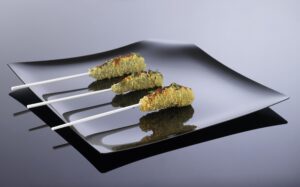
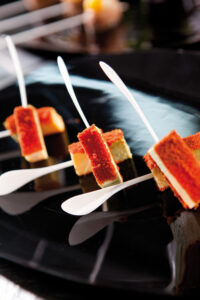
Other aspects and rules to bear in mind when plating
- The different components of a dish should create a sensation of unity and integrated design.
- You need to decide which will be the focal point of your composition, the main element to which the eye will first be drawn.
- The presentation of a dish has to offer a harmonious result where the balance between the different components stands out.
- It is important to pay attention to the colours and textures of the different components, which are essential for greater decorative intensity.
- Fewer things are very often more effective, which means you shouldn’t overload plates with more components than strictly needed.
- Cleanliness is essential, because a dirty plate will completely spoil the effect created by the food arrangement.
Utensils that can help you when plating
Now that you know how to plate and arrange food, we would like to explain the kitchen utensils you can use to simplify the plating process and achieve the perfect result.
Correct handling of food and keeping everything clean and tidy are essential when plating. Araven offers a complete range of products to help you in this process, such as our 4 compartment food box with lid GN1/1.

You can also find chopping boards, food pans, containers with or without lids, and kitchen utensil organisers, among others, on our website. In addition, if you need to display your dishes, we also provide buffet service accessories that are ideal for offering the best presentation.
The importance of using good crockery
The perfect plating would be impossible without quality crockery to give your dishes and elegant and professional appearance. No matter how much effort you put into plating, the result will be spoilt if you use plates that are old, faded or stained from use.
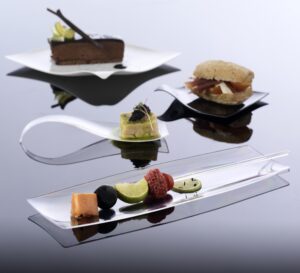
Remember that the aim of plating is to appeal to customers and encourage them to eat with their eyes, which means that the crockery you use to present your dish is as important as the actual food it contains. Our online store offers a wide variety of crockery for catering and hospitality establishments in general, with a good selection of different styles and colours to cater to every need.
Don’t hesitate any longer to source the products you need for unbeatable plating!
